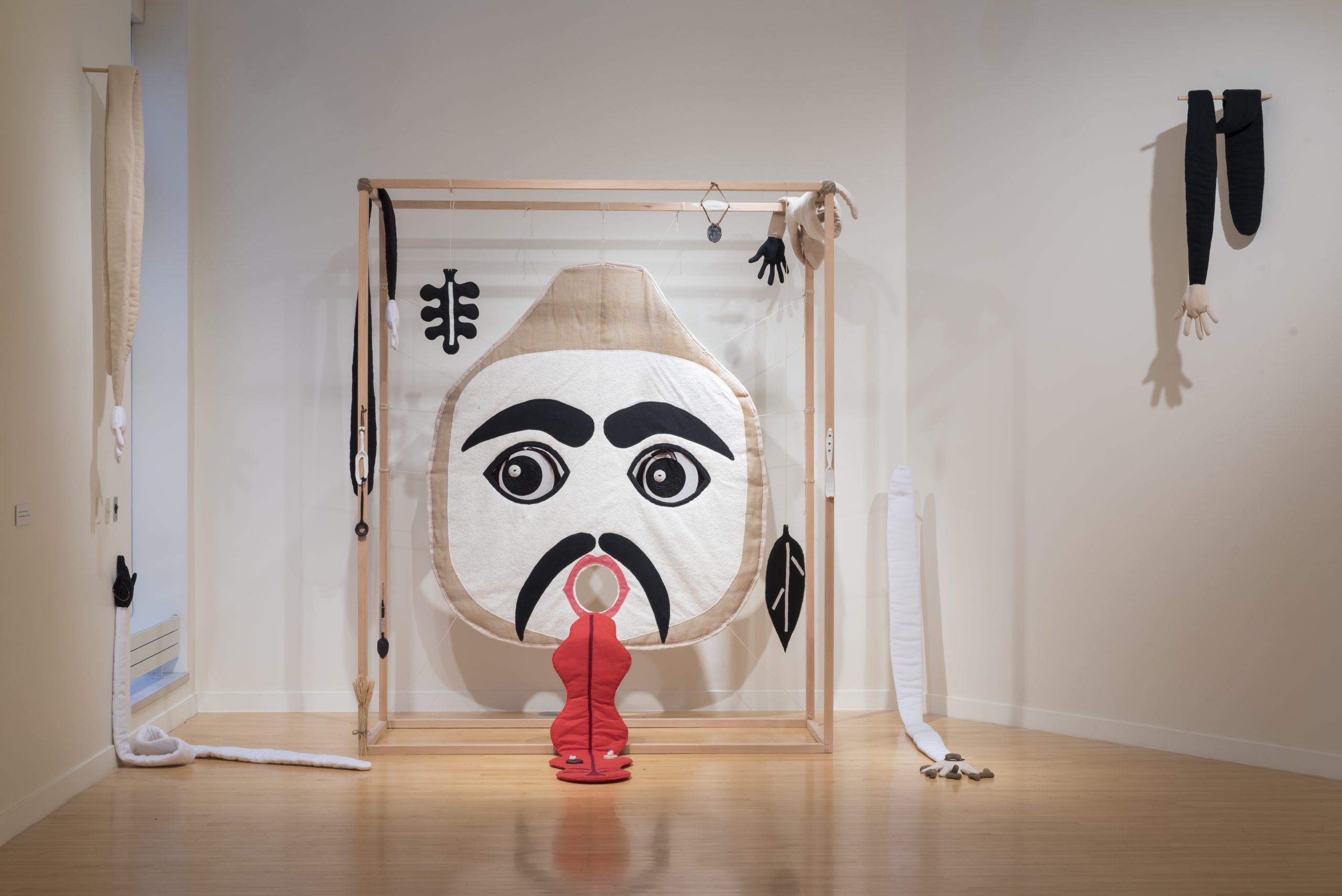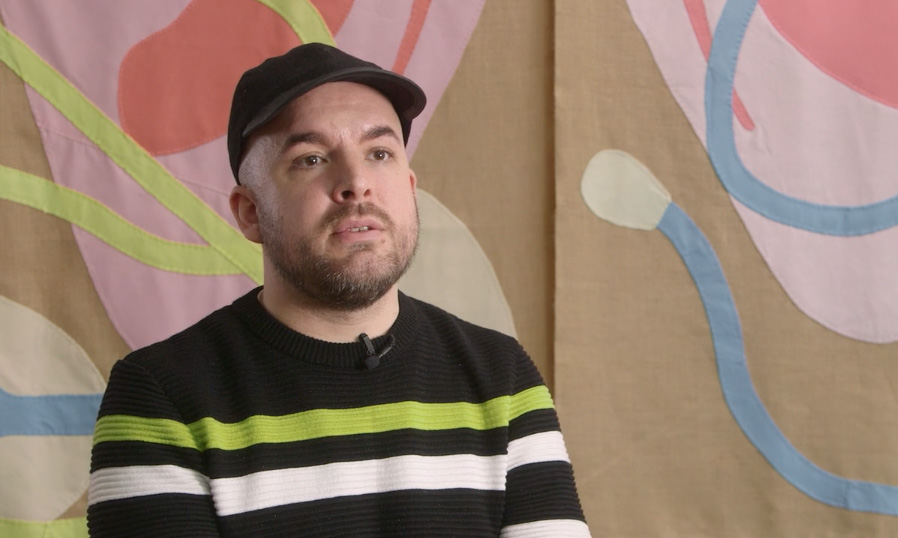
Martin Hargreaves on My biggest fear is that someone will crawl into it
In sleep our bodies restore and repair themselves but in dreams the body can be reassembled and extended easily with little concern for scale or function. Jonathan Baldock’s My biggest fear is that someone will crawl into it invites us into this more fantastical corporeal encounter with ourselves, a pillow upon which to imagine new material possibilities. For André Breton and fellow Surrealists, this was one of the main appeals of the dream; unlike Freud they were not interested in translating dreams into logical narratives but rather they relished the illogical creative potential of the sleeping mind. Breton argued that it freed the body from proper behaviour and allowed a revolt of the unconscious and a revaluation of fleshy connections. The appeal to the dreaming imagination in Baldock’s work picks up on this surreal promise and visitors are invited to reimagine their own embodiment. A dream of the body in new combinations can easily switch to nightmare however and horror lurches at us when this creative dismembering becomes abject, when the body parts become too detached and gain a sentience of their own. The fairground and the fairy story both have thrills of this kind; a reminder that the body can revolt and challenge our ability to rationally understand or control it. Baldock frequently returns to these genres of body-horror, which have both pleasure and a subtle threat running concurrently. The mouth that frames the entrance to the gallery could come from a Grimm tale but it also has an echo of a funhouse, mischievously claiming the white cube as a hall of mirrors. We cross a threshold into carnivalesque inversions of scale and order and are swallowed into reflections upon malleable flesh, bones that can be reshaped and skin that can be shed to escape into another relation to how we manifest in our own stories. The pink felt fantasies of isolated organs can offer a reimagining of corporeality and also remind us of the precariousness of the body.
The materials and handiwork are reminiscent of crafting and making-do; a rainy afternoon spent with cotton scraps and glue to create a new toy or a new costume. There is also something here of the child’s ability to shape-shift easily, a body not yet consolidated fully into adult form and always playing with how matter matters. The whispering sounds of Baldock’s mother’s autobiography draw our attention to how we visualise ourselves through the stories that we are told and then tell. Dressing-up and playing with substitute objects, children are able to imagine many new uses for bodies and they try on embodiment without the burden of seriousness. Bedtime for children is a ritual when the imaginative possibilities of the day come to a close and the solitude of the dark threatens to close in. Whilst the scale of Baldock’s Four-Poster is clearly not a cot, his decoration of the drapes reminds us of the thin barriers in childhood between the waking fantasy and the dreaming imagination. The child who resists going to bed needs to be told a story to drift off, and these fairytales are replete with large teeth that devour, eyes that pop out, noses that grow and oversized ears to hear secrets. The mother’s story is one in which she reimagines herself at the centre of her own narrative, able to reshape the past in order to better understand the present.
Baldock frequently collaborates with performers to further explore this forgotten pleasure of dressing up and telling stories. He imbues latent movement in his sculptural assemblages, and together with his collaborators he choreographs at the edges of human form, dancing uncannily at the limits of our recognition. A child’s metamorphic talents are put aside when assuming the solid state of adulthood but this avowed theatricality makes them available again. These performances are realisations of incorporation, making the domestic tremble with spasms of potential animism. The bed is a particularly potent stage for thinking through this expanded body in role play because, once we leave childhood, beds reveal other possibilities for exploring how flesh fits together and how we can dissolve boundaries between organs and objects. In addition to playful dreams, Baldock’s bed invites us to think queerly about possibilities for activities between the sheets. We can explore the engorged ear, the lolloping tongue, the glistening eye. There is not a singular sex, gender or sexuality here but spaces for connections between parts where pleasures might be found. This is not a normative marital bed but a space for ecstatic recombinations of sight, touch, taste and smell. What we do with each other in the bedroom, and what parts go where, is an acute articulation of the politics of the flesh. The bed is often imagined as a private sanctuary but it is here that social norms can be retraced and played out differently. The springs of the mattress can creak with new stories of bodily conjugations and the sheets can be stained by the labour of producing new forms of carnal knowledge.
The politics of the bed are not only sexual but also statistical. The bed is a site for safety and recovery, a place to retreat to in order to be healed, or a secure centre in a chaotic world. Access to beds is not however universal; Hackney has one of the highest rates of homelessness and the number of hospital beds are under threat from attacks on the NHS. The precariousness of bodies, our needs and interdependence, are at the fore in the sleeping body. We are especially vulnerable to all manner of touches, whether welcome or not: from lovers, from family, from the state, and from an economy which designates certain dreams as being more possible than others. This differential over the material conditions in which we can live and sleep can potentially divest us of our bodies, fragmenting us in ways that threaten the very possibility of a liveable life. Baldock’s bed asks us therefore what bodies besides ours can impinge on our dreams or share in our pleasures. It asks who do you want to crawl into bed with and for what?
---
Martin Hargreaves is an Associate Lecturer in Fine Art at Goldsmiths and a Visiting Lecturer in New Performative Practices at DOCH, Stockholm. His research practices range between boredom and hysteria, covering the histories of contemporary dance, queer performance and camp misunderstandings.





